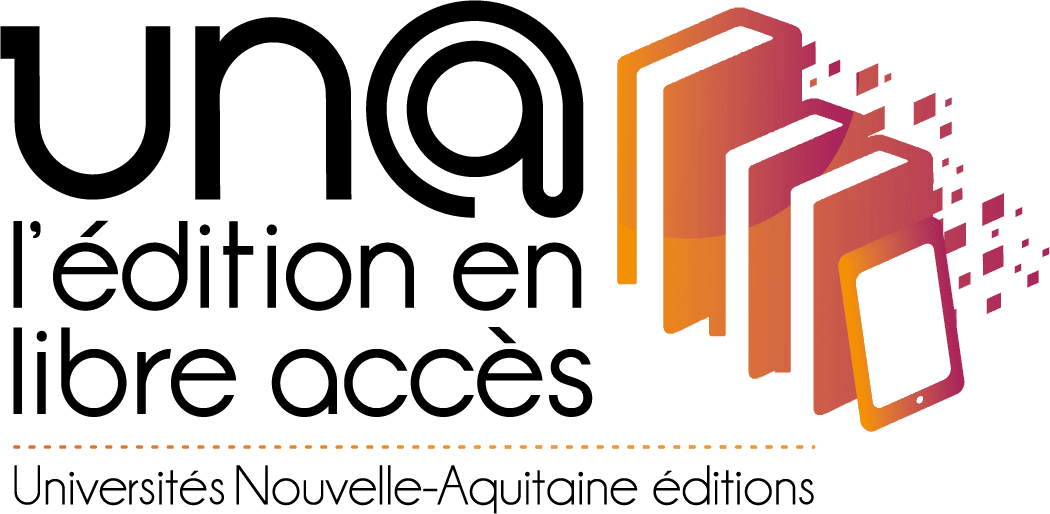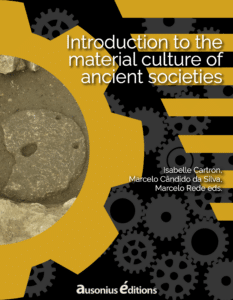UN@ est une plateforme d'édition de livres numériques pour les presses universitaires de Nouvelle-Aquitaine
Editeur : Ausonius Éditions

Fondé en 1995, Ausonius Éditions fut conçu à l’origine comme le service des publications de l’UMR Ausonius, laboratoire de recherches spécialisée dans les domaines de l’Antiquité, du Moyen Âge et de l’Archéologie. Progressivement, Ausonius Éditions s’est ouvert aux publications des chercheurs de toutes origines, au gré de multiples partenariats avec des équipes de recherches françaises et étrangères. Présentant aujourd’hui un catalogue de près de 300 titres, regroupés dans une vingtaine de collections, parmi lesquels coexistent formats pratiques et “beaux livres”, il jouit d’une large reconnaissance et diffusion auprès de la communauté scientifique internationale ainsi qu’auprès d’un public plus vaste de lecteurs curieux du passé. Aujourd’hui, Ausonius Éditions a pris une orientation résolument numérique pour certains de ces ouvrages en les proposant enrichis et en libre accès.
par André Miatello
In the seventh century, Isidore of Seville (Etymologiae, XV, iii) defined habitation [habitatio] as having [habere] a place to live, which could be a ‘casa’ (i.e., a rustic hut), a ‘domus’ (the residence for a single family), an ‘aula’ (the royal residence) or an ‘atrium’ (a large and spacious dwelling).
par Haude Morvan
In medieval Western Europe, religious and lay communities practiced common prayers in dedicated places, with special furniture and objects. For the monks, they were mainly in the choir stalls of the church and the chapter house
par Leonardo Fuduli
The cathedral of Messina, locally called ‘Duomo’, is currently a unique building not only for its historical and artistic importance but also for the singular events that have affected it in the last centuries: two earthquakes (1783; 1908) and one bombing (1943).
The last centuries of Antiquity were marked by the spread of Christianity and its growing influence on Western societies. Its expansion was encouraged by the members of the clergy that was being set up, as well as by the circulation of people and ideas within an Empire that made it its official religion in 380.
Recently, knowledge of the ancient habitat during Antiquity has benefited from the multiplication of preventive excavations, from the contribution of programmed excavations, but also from data obtained from pedestrian, aerial and geophysical prospection.
par Isabelle Cartron
The Western Middle Ages were strongly marked by the emergence and affirmation of Christianity: being part of the Ecclesia (i.e. the community of Christians) it became a frame of reference that was reflected in many individual and collective practices.
par Leandro Ranieri
This is a typical siege scene in the Assyrian palaces. Recurrently, war scenes were placed in the walls of throne rooms (besides some symbolic and protective images).
par André Miatello
Archeological excavations and aerial revelations show that the larger villae continued to develop until the 5th century, while the smaller ones were abandoned between the 2nd and 3rd centuries.
The study of warfare in ancient societies can bring to the fore an understanding of what happen in those societies.
par Wendy Bougraud
The Inrap archaeological excavation carried out at the end of 2020 in Mortagne-sur-Sèvres (85) led to the discovery of a sepulchral complex of 99 tombs dated between the 6th and 7th centuries AD
par Adrien Bayard
For almost a century, archaeologists and historians have long debated the role of trade in the economies of ancient and medieval societies. Primitivist and modernist views have been at odds over the existence and role of the economy and the market in Antiquity and the Middle Ages.
par Alban Gautier
The social food traditions may be roughly divided into two main categories. In one hand, feasting – being any kind of celebratory meal– is generally led to profusion and overabundance.


